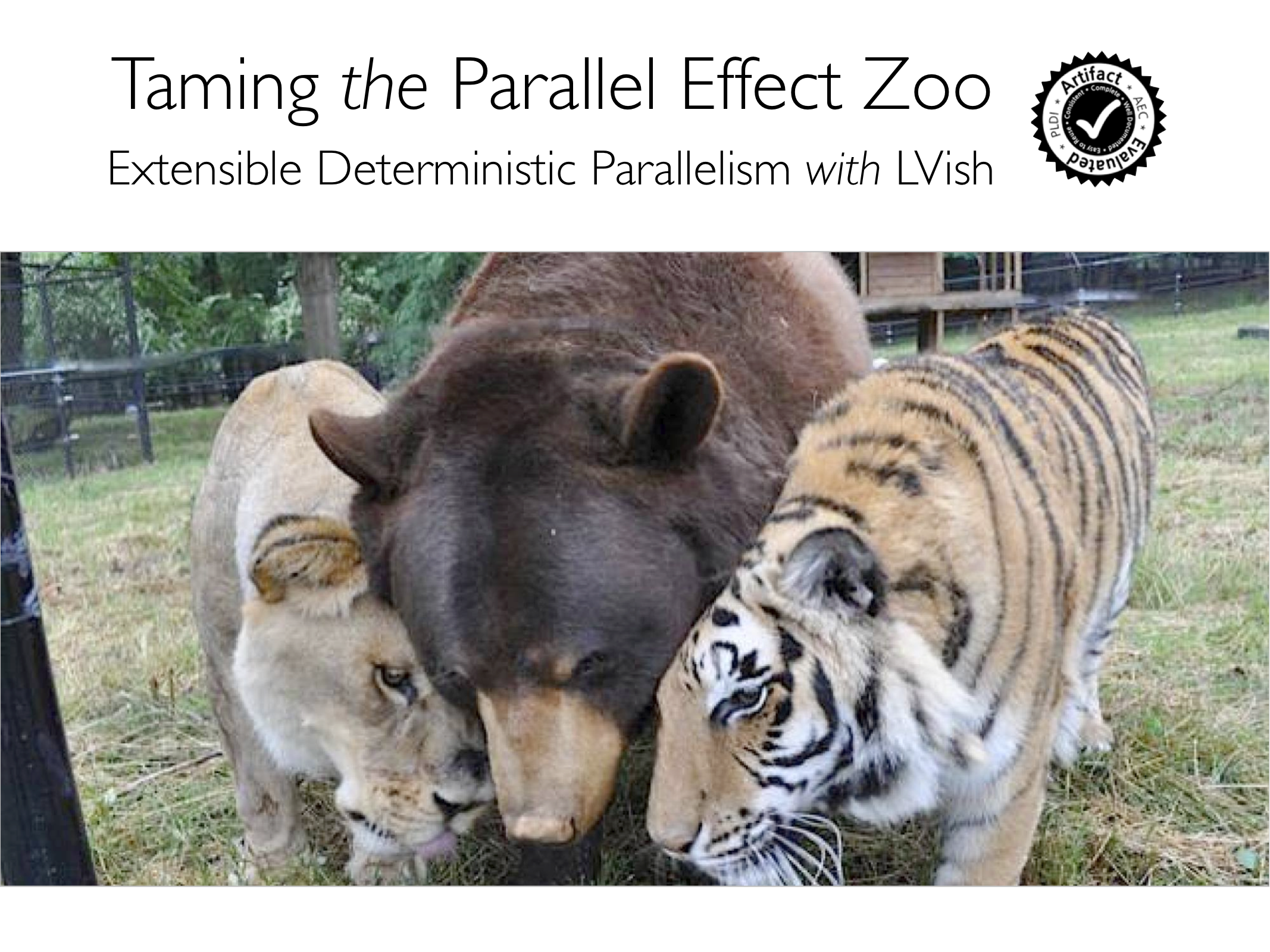A one-minute talk about “Taming the Parallel Effect Zoo”
At PLDI a few weeks ago, my advisor Ryan Newton presented our paper “Taming the Parallel Effect Zoo: Extensible Deterministic Parallelism with LVish”. This year, PLDI asked the authors of each paper to give a short, one-minute talk, accompanied by a single slide, in the morning on the day of their main, twenty-minute presentation. The goal of the one-minute talks was to encourage people to attend the main talks and help them decide which ones to see. On each morning of the conference, all of that day’s one-minute talks were presented one after another, right after the keynote presentation.
Since Ryan was giving the main talk for our paper, I offered to do the one-minute talk. I had gratefully accepted Ryan’s offer to give the main talk, but this gave me a chance to contribute in some way to the presentation of our paper. Besides, I really like giving these one-minute talks! My slide looked like this:

And the talk went something like the following:
Hi! I’m Lindsey Kuper from Indiana University, and this is Leo the lion, Baloo the bear, and Shere Khan the tiger. They live at an animal sanctuary in the US after having been rescued in 2001, and they are apparently the only lion, bear, and tiger in the world that live together in the same enclosure, and have done so happily for thirteen years.
Unfortunately, our deterministic parallel programming models rarely get along as well as these three do. Consider, for instance, data-flow pipeline parallelism and disjoint parallel mutation of a store. They appear to have rather different mechanisms for exposing parallelism and ensuring determinism. How can these “different animals” coexist?
In our paper, we show how the LVish programming model, based on LVars, or lattice-based, monotonically growing shared data structures, can accommodate these apparently unrelated approaches to parallelism, and make them play together nicely within a single guaranteed-deterministic framework, while maintaining good performance.
As you can see from my slide and talk, my philosophy about these things is that you can’t realistically expect to get any technical material across in only one minute, so you might as well just use humor and an analogy that people will remember. (It’s a true story, incidentally.) The talk went over well enough that afterward, a researcher who is known for his entertaining talks asked if he could use my slide in a communication skills lecture on how to give a good talk! So, that was cool.
I thought the teaser talks were a great idea on the part of the PLDI organizers. It’s often hard to decide how to allocate one’s time at a conference, especially when there are lots of talks going on in multiple tracks and it’s not necessarily obvious which ones are going to be relevant to one’s own work. I usually find myself choosing which talks to attend not necessarily because they’re particularly related to my research, but just because I know the speaker is good and that I’m likely to learn something and be entertained. But, if I’ve never seen a speaker before, I may not know if they’re good, and I risk missing out on a great talk, or even missing out on something that really is relevant to my work, just because I’ve never heard of the speaker. The one-minute talks are a way to ameliorate that problem. Plus, it’s a fun challenge to try to give a talk in one minute. It would be great to see the teaser talk tradition continue at PLDI and spread to other conferences as well.

Comments